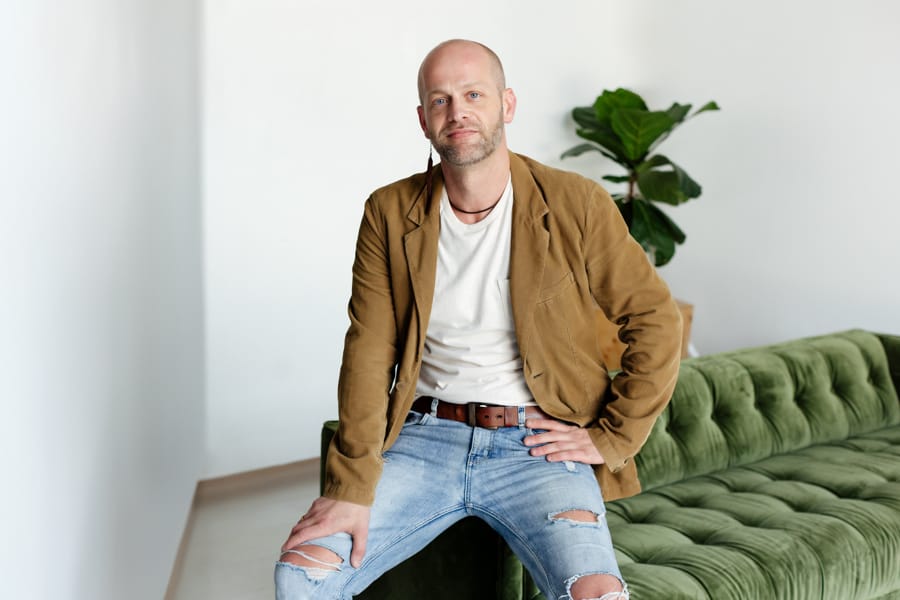How to step out with thought dichotomy and into ambiguity
Part 1 – It’s so good it’s bad AND ALSO It’s so bad it’s good.
For a population generally anxious with individual inductive and deductive inabilities for detecting environmental danger – we sure do manage to see our world in simple terms and come to rapid conclusions. Often at the expense of our own good.
“I know that smoking is bad for me, but I just love it.”
“I probably shouldn’t be saying this, but I can’t wait to tell someone.”
“I failed another exam, I’m just not smart enough.” \
“He left me, I’m unloveable.”
“This fruit is forbidden, where is Adam?”
When we want to draw a conclusion we sure do know how to! Isn’t that something? But that is our brain, doing its only job. Just keeping our body alive.
On an instinctual level and from an evolutionary developmental perspective it makes sense we would reduce the world down to black and white, either/or thinking. It is much easier to make a choice between two things than 20 . . . To survive we needed to make quick decisions and couldn’t take space to deliberate whether or not an approaching bear was a good or bad bear, or if it had eaten already that day etc.
You might be thinking what does my picking up smoking again, my bad habits, or my self-narrative have to do with this? Bear with me. (couldn’t resist). So our brain’s tendency is to reduce the field of choice down to two options in order to promote rapid response and survive. That tendency is hardwired to the reductive tendency in our field of perception, interpretive processes, and in our interpersonal/intrapersonal experiences.
Meaning we easily and quickly learn to narrow things down to good and bad. We see, assess, conclude and relate action on the basis of it being either this or that. We have a lot to be thankful for this tendency or instinct. After all, we are each the surviving result of a long line of things that work – that have persisted and lived. We are well proven and oiled ancient machines. So, It is a fair way to go, but it isn’t the only way to go.
It does prevent us from a great deal of harm, this instinct also keeps us from a great deal of potential. Actually, it is VERY precluding. Ultimately nothing is good or bad but our thinking that makes it so. There is quite a space pit between good and bad. While our brain doesn’t love gray (ironically)- with practice we can happily exist in gray. We can even begin navigating ambiguity without anxiety which typically accompanies unknown spaces by conscious discipline.
All of that to say – let’s not look at our behaviors, thoughts, and feelings through dual lens of good and bad (either/or, this or that thinking). I am either smoking or not smoking. I am either healthy or not healthy. It is either a good thing or a bad thing. Instead we can use this and also that thinking. I am smoking and also not smoking. I am healthy and also not healthy. It is both a good thing and also a bad thing.
How can you tap into all that abstracted stuff and apply it usefully? Use mindful reflection (something our brain doesn’t afford, it has a limited resource scarcity mindset) vs. our instinctive reaction. What I mean by mindful reflection is distinctively different than memory recall, reminiscence, or nostalgic thinking – it is intentionally reflecting, in a specific way, for a specific purpose, and doing it non-judgmentally. I use the Gibbs reflection cycle as process as good process. If you aren’t familiar with the cycle already, please see my recent Blog article about it.
While reading this post you may have had a habit, thought, or feeling that has kept coming to mind. I would like to take you through a thought exercise that is similar to one you may experience in therapy sessions with me. Since I don’t know if we or are or aren’t reflecting on an isolated event, a behavior, thought or feeling as a whole – I am going to ask a question that doesn’t fall in sequence to the cycle but I think is a good starting point. What benefit do you get out of ___________? What does _______ do for you?
I’ll do it with you. I asked myself: What benefit do I get out of smoking? What does smoking do for me?
Keep an eye out for my next blog. I will share my answers and together we can use our answers and to move us into our gray – stepping away from thought dichotomy. I also hope to demonstrate another useful tool clients get in live sessions to assist them as they step into the gray and away from thought dichotomy.
If you are looking to begin or even resume your personal journey towards self-possession, are in need of a fellow sojourner, help getting unstuck, benefit from objective insight, and are ready to engage in a purposeful, meaningful relationship with your self – please reach out to schedule a complimentary 15 minute consultation.
Looking forward …
David Head, Licensed Professional Counselor, Existential Psychotherapist, and Life Coach.

